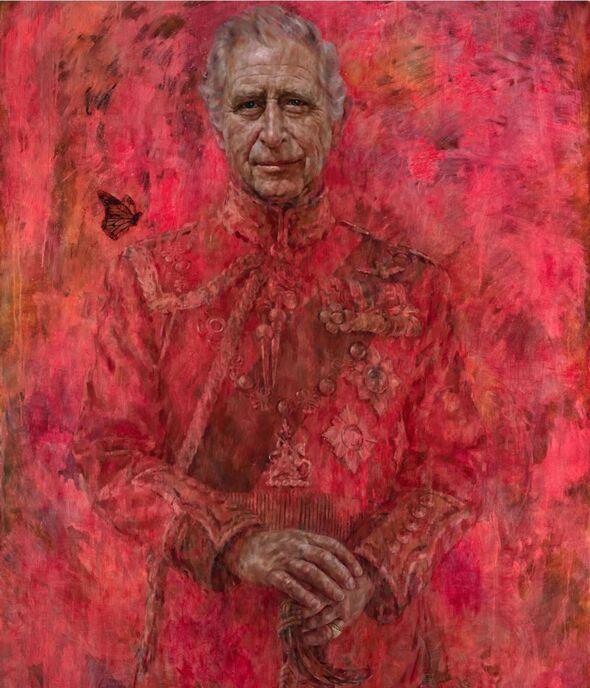The first official portrait of King Charles III since his coronation has been unveiled, and it has quickly become a subject of intense public and critical scrutiny. Painted by renowned artist Paul Benney, the portrait was intended to capture the regal essence of the newly crowned monarch. Instead, it has sparked widespread debate and mixed reactions across social media and art circles.
The Unveiling and Initial Reactions
The portrait, which was unveiled at the National Portrait Gallery in London, depicts King Charles III in traditional royal regalia, featuring the iconic crown and a richly adorned robe. However, within hours of its release, the painting was met with a barrage of criticism.
Many art critics and royal watchers have taken issue with the portrayal, citing a range of concerns from the depiction’s perceived lack of realism to the overall aesthetic choices made by the artist. Social media platforms have been flooded with comments from both supporters and detractors, making the portrait a trending topic.
Criticisms from Art Experts
Art critic Jonathan Jones from The Guardian was particularly scathing, noting, “While Benney is a respected artist, this portrait misses the mark in conveying the gravitas and warmth of King Charles III. The likeness is there, but the soul of the monarch seems absent.”
Similarly, Sarah Crompton of The Times expressed disappointment, stating, “The portrait’s execution feels dated and uninspired. It fails to capture the progressive spirit that many hoped King Charles would bring to his reign.”
Public Opinion
The public reaction has been equally polarized. On Twitter, the hashtag #CharlesPortraitFail has gained traction, with users comparing the painting to unflattering caricatures and memes. “It looks like a wax figure melting,” one user commented, while another tweeted, “Is this the best representation of our king in the digital age?”
However, not all feedback has been negative. Some supporters appreciate the traditional approach Benney took, arguing that it aligns with the timeless dignity expected of royal portraits. “A portrait should be timeless, and this one certainly is. It’s a nod to tradition in a modern world,” one Instagram user defended.
The Artist’s Perspective
Paul Benney, the artist behind the controversial portrait, has defended his work in several interviews. “Capturing the essence of a monarch is no small feat. My goal was to blend traditional royal portraiture with a modern touch, paying homage to King Charles III’s longstanding commitment to heritage and the arts,” Benney explained.
He also emphasized the collaborative process with the king, who provided input during the creation of the piece. “King Charles was deeply involved in the process, and his guidance was invaluable in shaping the final result,” Benney added.
Historical Context
This is not the first time a royal portrait has faced criticism. Throughout history, portraits of monarchs have often been subjects of public debate. Queen Victoria’s early portraits were initially panned for being too informal, and more recently, the official portraits of Queen Elizabeth II have faced both acclaim and critique.
The Bigger Picture
The reaction to King Charles III’s portrait highlights the evolving relationship between the monarchy and public perception. As the first major artistic depiction of the new king, it was bound to be scrutinized. The mixed responses reflect broader conversations about tradition, modernity, and the role of the monarchy in contemporary society.
Conclusion
While King Charles III’s first official portrait may not have garnered universal acclaim, it has certainly succeeded in generating conversation. As with all art, its value and impact may evolve over time, influenced by changing tastes and historical perspectives. For now, it stands as a provocative start to King Charles III’s visual legacy as the reigning monarch.























